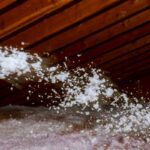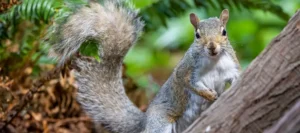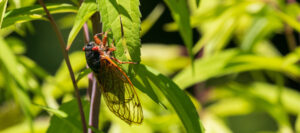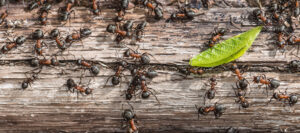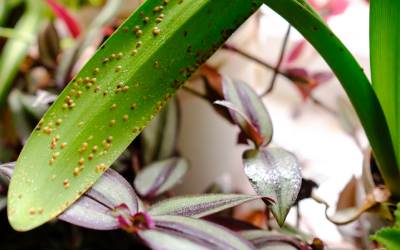
Houseplants are a great way to liven up any living space. They not only improve the aesthetics of the room but also have several health benefits, including purifying the air and reducing stress. However, houseplants can also attract bugs and pests, which can be detrimental to their health and also cause an infestation in your home. The good news is that, like most bugs, there are steps you can take to deal with them before they become an infestation. Consistently inspect your houseplants for evidence of pest activity. Preventing pests in houseplants starts with early detection.
Common Houseplant Pests
- Spider Mites: Tiny pests that are difficult to see but cause significant damage to your plants. Spider mites suck sap from leaves and stem, taking valuable nutrients away from your plant. Look for yellowing or stippling of leaves, webbing on plants, and the presence of speck-like insects.
- Mealybugs: Soft-bodied insects that look like white cotton balls. Found on the underside of leaves and on stems. These bugs also feed on plant sap and can stunt your plant’s growth.
- Scale Insects: Scales are often found on the stems and leaves of plants. They can be identified by their hard, waxy coverings. They suck plant sap and lead to yellowing leaves, stunted growth, and plant death if left untreated.
- Fungus Gnats: These tiny bugs are often found in the soil and can be identified with their black bodies and long, thin wings. They do not directly harm plants but can cause root damage if the population becomes too large.
Pest Prevention Tips
- Keep Plants Clean: Clean off dust and debris that accumulates on leaves, this provides a breeding ground for insects if left. Wipe the leaves of houseplants with a damp cloth regularly. Clean leaves also help the plant photosynthesize more effectively and stay healthy.
- Inspect New Plants: When you buy new plants, inspect them thoroughly before bringing them inside. Look for any signs of pest infestation, such as holes in the leaves, sticky residue, or webs. If you notice these signs, do not buy the plant. If you cannot examine the plant before buying it, quarantine the new plant for a few days before placing it among your other plants.
- Water Correctly: Overwatering can lead to development of fungus gnats. Only water the top inch of soil when it is dry to the touch or invest in self-watering globes which will water the plant from the bottom. Avoid letting the soil remain waterlogged. Ensure there is enough drainage to allow excess water to drain.
- Use Natural Insecticides: If you do find pests in your houseplants, there are several natural insecticides that can get rid of them. Neem oil, for instance, is effective and save for use on most plants. You can use a mixture of water and dish soap to spray on the leaves of the plants. This will suffocate the insects and prevent them from laying eggs.
- Use Sticky Traps: Sticky traps are a great way to catch flying insects like fungus gnats. These traps have a sticky substance that the insect cannot escape from after landing on them. You can place these traps near your houseplants.
Professional Pest Control
If you have tried to get rid of a pest infestation to no avail, it may be time to call the professionals. Our team at Springer Professional Home Services is equipped with the products and experience to help. Since 1989, we’ve provided trusted extermination services to homes and businesses throughout Central Iowa. Call us today for a free quote!
Preventing Pests in Houseplants in Des Moines
Serving Central Iowa since 1989


